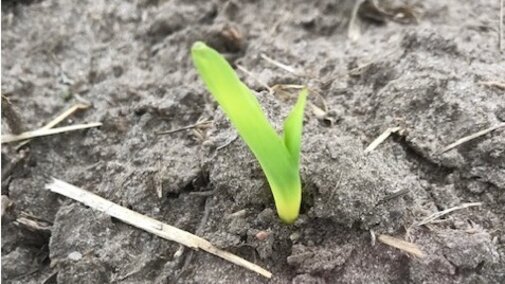Question:
Why is corn emergence uneven this year?
Background:
Planting conditions seemed to be “perfect” regarding soil moisture and a warming trend of soil temperatures this year in late April through early May. This allowed a large percent of corn and soybean acres in Nebraska to be planted earlier than in previous years. Because conditions seemed so good, the question is why emergence has been uneven in some fields this year.
Answer:
Seed depth and the environmental variability surrounding the seed may explain the most in regards to variation in soil moisture, temperature, and residue cover. Every field situation is unique. The following is what we have seen and heard this year.
Where tillage, clean strips, and residue cleaners were used, we’ve observed situations where the corn emerged a few days earlier where residue did not blow back over the seed row compared to where it did. Those two situations provide differences in soil moisture and temperature.
A few farmers who “planted green” into rye cover had some interesting observations. They had more uneven corn emergence where the rye was killed prior to planting compared to where they planted green. They said the rye that was alive when planting held the residue in place compared to the rye that was killed prior.
There were a few days in late April where we seemed to quickly lose surface soil moisture. Some fields may have had better moisture at seeding depth, but variation in seeding depth within the row impacted the moisture around the seed for germination and even emergence.
No-till fields and fields planted into cover crops have stayed cooler since early May which has delayed growth and emergence.
Strip-till may have allowed for soft seed bed conditions for uneven depth and some moisture loss. Another thing observed prior to this past week’s rains was fertilizer burn on roots in some fall and spring strip-till situations. The greatest moisture loss has occurred in conventional till fields and those which were more cloddy tended to have the most uneven emergence.
There have been isolated cases of insect issues such as wireworm and seed corn maggot.
There could be some potential seed lot/cold germ issues. One thing to consider is there are near isolines of traited/non-traited seed in the Refuge in Bag (RIB). So, there could potentially be some differences in emergence under stress/cold germ there.
The following article on Growing Degree Units and Emergence may also be helpful information.
Yield Impacts:
We realize the uneven emergence has been bothering farmers. Yield loss may not be as great as one thinks. Research from Purdue University found yield reductions of 6-9% for plants emerging 1.5 weeks later than a uniformly emerging stand. They also found yields of uneven stands to be similar to planting the stand 1.5 weeks later.

